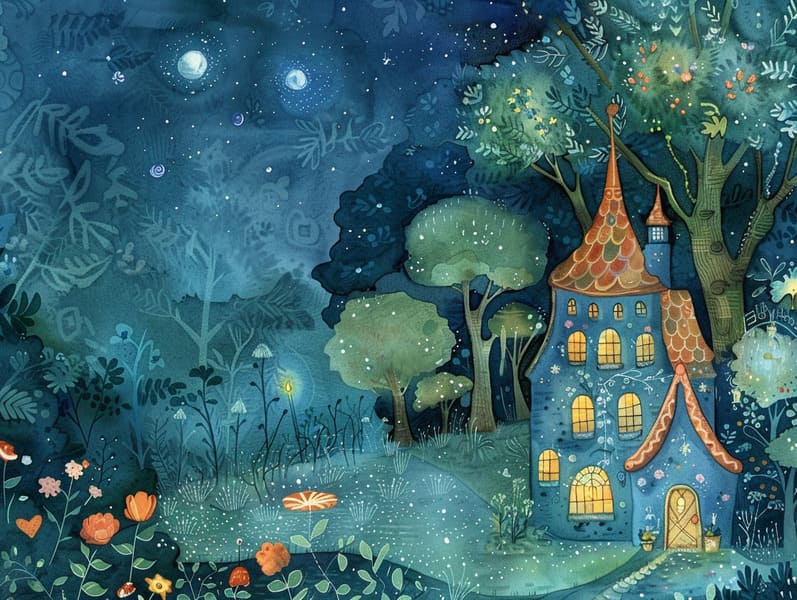The Start of Popular Fairy Tales and Their Immortal Majesty.
The Start of Popular Fairy Tales and Their Immortal Majesty.
Blog Article

Fairy tales for kids have old origins. These tales have been narrated from one generation to the next long before they were ever written down. They came from a variety of civilizations, including Western traditions. They were initially disseminated among older generations, often carrying themes and messages concerning the societal norms and beliefs of the time.
The renowned Brothers Grimm, Jacob and Wilhelm Grimm, were among the first to compile and publish many of these beloved narratives. Their published works, "Grimm's Folk Tales," included classics like "The True Bride," "The Story of Hansel and Gretel," and "Little Snow White," which have since become pillars in the world of traditional fairy tales. Similarly, Hans Andersen's delightful tales, such as "The Sea Maid," and "The Little Duckling," have floated into hearts worldwide, solidifying their place in the pantheon of treasured fairy tales.
Despite their historical roots, classic fairy tales remain as meaningful as ever, especially as bedtime stories for kids. These fantastical tales are now available in numerous formats, including artistically illustrated books, fantastical animations, and internet fairy tales.
Their ongoing significance can be traced to several whimsical characteristics:
Ethical Lessons: Timeless fairy tales often provide important moral lessons. Tales like "The Tale of the Boy Who Cried Wolf" teach the benefit of integrity, while "The Tale of the Tortoise and the Hare" emphasize the traits of determination and meekness. These tales offer kids clear distinctions between good and bad, molding their moral compass in a kind yet important way.
Kindness and Comprehension: Timeless fairy tales frequently showcase personalities facing obstacles and hardships, fostering kids to empathize with their struggles and root for their triumphs. For instance, "Beauty and the Beast" conveys the significance of looking past the exterior to know the true character of a character, enhancing understanding and appreciation.
Cultural Knowledge: Many old fairy tales are rooted in the cultural contexts from which they blossomed. Reading these stories can provide enlightening views into different customs, cultivating a sense of global awareness and appreciation.
Inventiveness and Fantasy: The fantasy-filled elements in fairy tales—magic wands—promote children’s visions. These tales lead readers to fantastical realms, enlivening creative dreams and a sense of magic that endures a lifetime.
Traditional fairy tales are not only delightful but also teaching. They serve as fascinating tools in strengthening various mind and heart abilities in the young. When timeless fairy tales are spoken, they foster language development by bringing new language and intricate sentence structures. This practice also fosters listening abilities and attention, as children pay close attention, ready to see what happens next.
Furthermore, examining the themes and characters of timeless fairy tales can foster problem-solving abilities and intellectual skills. The young learn to spot patterns, predict happenings, and understand cause and effect. These talks also help the young voice their thoughts and feelings, cultivating their emotional intelligence.
In today’s modern era, the existence of online fairy tales has made these tales more accessible than ever. Online platforms and online apps give wide arrays of Grimm's fairy tales that can be perused or listened through anytime, anywhere. Fairy tales told out loud are particularly liked, making available an interactive way for the young to experience these charming tales. Read-aloud stories and read-to-me stories bring characters and settings to life, often supported by mesmerizing background sounds and background music that boost the narrative experience.
The everlasting appeal of classic fairy tales click here lies in their ability to modify to contemporary times while preserving their essential themes. Contemporary retellings of these stories often showcase more representative figures and modern settings, making them meaningful to today’s audience. However, the key lessons of guts, warmth, and even-handedness remain unchanged, continuing to impact children of all ages.
Traditional fairy tales also offer a sense of reassurance and closeness. They supply a well-arranged narrative with a distinct beginning, middle, and end, often ending with the ending of conflicts and the triumph of virtue over wickedness. This reliability can be easing for little ones, delivering a sense of unchangeability in an fluid world.
Ancient fairy tales continue to delight and instruct new generations, maintaining their fascination and significance in modern society. As children's bedtime stories, they offer a perfect blend of delight and instruction, developing moral values, empathy, and creativity. The proliferation of online fairy tales and the well-received status of fairy tales told out loud guarantee that these timeless tales remain reachable to new generations.
By safeguarding and releasing these narratives, we continue to extol the rich tapestry of human imagination and cultural heritage. Whether you are seeing a richly illustrated book, viewing a digital library, or listening on an audiobook, the loveliness of popular fairy tales is always within reach. These stories remind us of the undying spell of tales and its ability to join us across time and space.
Even if you are delving into a vividly illustrated book, accessing a digital library, or listening via an voice book, the allure of traditional fairy tales is always within reach.
These fairy tales highlight of the unwavering magic of narratives and its ability to bring us together across eras and regions, making a tie that captivates and teaches alike.